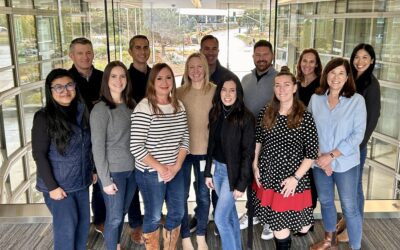Deliver Better Onboarding Experiences Through Stories
For easy ideas to create a successful onboarding journey through storytelling, check out this simple guide. Or, keep reading to learn more about story-driven onboarding.
In 2016, I started a new job…for the fifth time in eight years.
I’m a millennial, so this personal statistic may not surprise you. Studies show that over 90 percent of millennials expect to leave their current job in less than three years. That means that of the 10 millennials you might work with today, only one plans to stick around past 2020.
So why do millennials leave? Because they crave meaning in their work.
Only 20% of millennials are happy working in a place without a set mission. Most companies have a mission statement, but that doesn’t mean they’re clearly communicating the organization’s story—the mission, culture, values, and people—to new hires (millennials or otherwise).
As organizations grapple with high turnover, finding ways to increase engagement should be a key focus that begins with an employee’s first day. Crafting a meaningful onboarding experience includes sharing purpose-driven stories that cultivate a sense of pride and responsibility. This can help individuals create and find purpose in their work, something that millennials rate even more important than a paycheck.
How storytelling strengthens onboarding and engagement.
Storytelling is one of the richest—and oldest—forms of communication. Since our earliest history, humans have crafted, performed, and listened to stories that helped us create meaning out of our experiences. Through storytelling, we share ideas and perspectives, learn about ourselves and others, and become a part of something bigger.
Stories can be used in onboarding to more memorably communicate facts (complex processes, structures, and internal context) while revealing aspects of the organization’s culture and vision. Here’s how:
Storytelling empowers the imagination.
Stories allow us to step outside ourselves and our normal roles to consider new possibilities and to empathize with others. You can use storytelling to help new hires visualize their future at the organization and the new opportunities that await them. By connecting their future to the collective story of your organization and of other employees, you encourage them to engage with the organization from their first day.
Storytelling promotes knowledge sharing.
While onboarding, new hires are learning to adapt to a new environment as well as new ways of working. These developed behaviors and knowledge help establish the foundation for success in a role. Stories are helpful to this process. Through storytelling, new hires are able to receive information with useful context. Storytelling also invites the listener to emotionally connect to the knowledge that is shared, which is a more memorable and effective way to learn.
Onboarding and purpose-driven storytelling.
Purposefully sharing stories as part of onboarding enables new hires to reflect on the onboarding experience, the organization, and their new roles in a meaningful way. Storytelling also helps them connect their own experiences to the organization’s story, inspiring action that can further support the organization’s culture and growth.
Guiding and supporting new hires by sharing stories throughout the onboarding journey creates a sense of community that sets the foundation for their future at the organization. In time, they will be sharing their own stories of success in the organization.
And don’t forget to download your guide to create a successful onboarding journey through storytelling!
Want to connect with Molly? Give us a call at (859) 415-1000 or drop us a line in the form at the bottom of this page.




